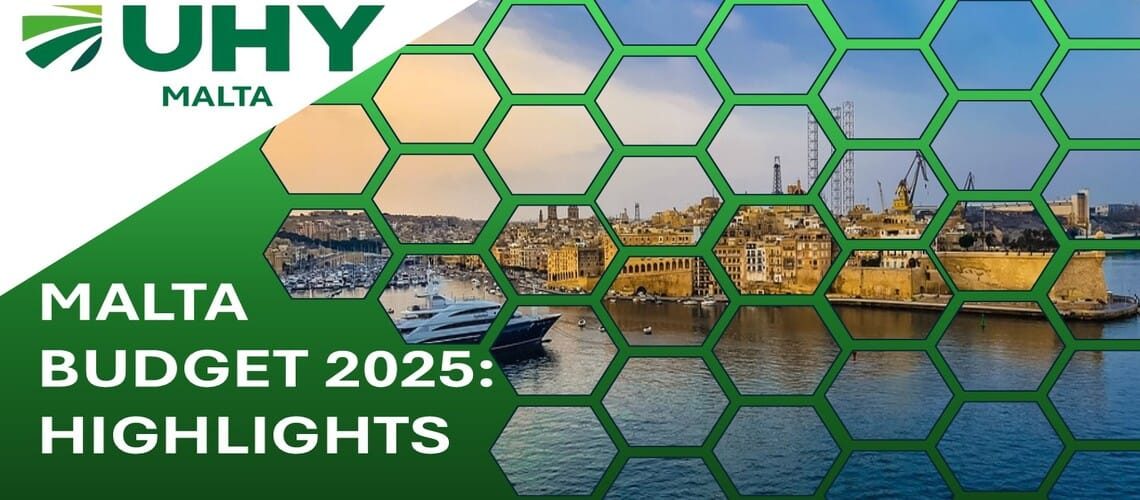The Malta Budget 2025, presented by Finance Minister Clyde Caruana, takes a multifaceted approach focused on tax reform, social welfare, and sustainable growth, while managing fiscal responsibility. Here’s a more detailed breakdown of its key elements:
1. Income Tax Cuts and Fiscal Impact
- Scope and Cost: The budget introduces broad income tax cuts, expected to benefit the middle class significantly, especially those earning between €20,000 and €25,000. This measure, estimated to cost over €100 million, aims to increase household spending power and reduce the financial burden across income brackets. Even higher-income groups are included, with all tax bands seeing some level of reduction. Caruana has confirmed that the tax cut won’t discriminate between different income levels and won’t introduce new taxes.
- Economic Rationale: The tax cuts are part of Malta’s broader strategy to support the middle class and bolster economic resilience. This approach also aligns with Malta’s remarkable economic expansion, where GDP is projected to reach €22 billion by 2025, up from €8 billion in 2013, which has enabled the government to invest back into its populace without increasing debt-to-GDP ratios.
2. Expanded Social Benefits
- Child Allowances and Pensions: The budget provides increased allocations for child allowances, responding to rising living costs and supporting family income. Pensions will also be increased, aiming to provide more financial security for retirees and ease the impact of inflation on fixed incomes.
- Additional Social Spending: Alongside allowances, the budget has committed €460 million to support subsidies across sectors, such as energy and education, to stabilize household expenses and bolster public services. These subsidies are designed to relieve pressure on low- and middle-income families.
3. Labour Market Strategy and Foreign Workforce Management
- New Labour Policy: Malta’s labour market strategy for 2025 involves a recalibration of foreign worker policies. The country heavily depends on foreign labour, particularly third-country nationals (TCNs), which has raised concerns about public service pressure. The budget introduces a policy focused on aligning foreign labour with critical skills shortages and implementing measures to encourage upskilling among Maltese workers to fill higher-skilled positions.
- Balancing Growth and Infrastructure: Acknowledging the population growth resulting from foreign labour, Caruana emphasized the necessity of these workers but also warned about the potential long-term strain on infrastructure if migration is unregulated. The new policy will focus on strategic upskilling and improving working conditions, allowing Malta to optimize its workforce without overwhelming public resources.
4. Corporate Tax Reform and Compliance Initiatives
- Corporate Tax Adjustments: With Malta’s current corporate tax regime under EU scrutiny, the budget addresses the anticipated reduction in the effective tax rate for foreign companies. The government is negotiating with the EU to reduce the rebate from the current 6/7ths, effectively bringing the rate closer to the global 15% minimum standard recommended by the OECD. This reform will incorporate Qualified Refundable Tax Credits to remain competitive internationally while maintaining alignment with global tax standards.
- AI and Anti-Tax Evasion: An AI-powered system implemented by the government has vastly improved tax compliance. Over the past year, this system helped Malta recover €300 million in unpaid taxes, reducing tax evasion without needing to increase tax rates. The system enables quicker audits and accurate identification of defaulters, addressing the 40-45% of companies previously flagged for tax non-compliance.
5. Public Infrastructure and Transport
- National Transport Master Plan: Originally set for completion in 2025, Malta’s National Transport Master Plan is undergoing reassessment due to unresolved transportation challenges. Budget 2025 includes provisions for new road infrastructure and improved traffic management. The plan emphasizes sustainable transport solutions to reduce congestion and environmental impact.
- Long-Term Tourism Strategy: Through the Malta Tourism Authority (MTA), the government is targeting new tourism markets in the U.S., Japan, Australia, and the Gulf to ensure year-round tourism flows. The focus is on attracting high-value tourists, which includes improvements in hospitality and public cleanliness, while also preserving Malta’s heritage and natural resources.
6. Energy Subsidies and Financial Sustainability for Public Institutions
- Energy Subsidies: The government confirmed it will maintain energy subsidies to stabilize prices, despite EU recommendations to phase them out. This subsidy, part of the €460 million budget allocation, is intended to provide residents with price stability in the face of ongoing global energy fluctuations.
- University of Malta and Subsidies for Education: The budget also calls for the University of Malta to find ways to generate revenue independently. Additionally, the government is subsidizing independent schools that face rising operational costs due to recent salary agreements. This measure seeks to ensure affordability for parents and relieve state schools of additional enrollment pressure due to high private school fees.
Overall, the 2025 Malta Budget emphasizes fiscal responsibility with significant social and economic support measures. The government aims to reduce the deficit and maintain debt levels, achieved through a balanced approach to spending and reforms while promoting long-term stability and economic growth.

